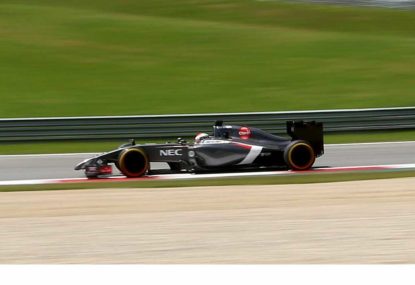'Welcome back': Reliving the last Chinese Grand Prix ahead of its much-anticipated return five years later
Five-years is a long time in motorsport, let alone the general state of the world – especially given the impact of the Covid-19 pandemic…

The Formula One season came alive in July like no-one thought possible after the thrilling British and Hungarian grands prix delivered action-packed racing unlike that which has filled most of the season.
In Hungary, as was the case in Britain, dynamic starts at the pointy end of the grid set of a series of events that unravelled into an exciting race.
In Budapest it was Ferrari, like Williams before them, that launched a perfect start to nail Mercedes off the line, and the race was won.
The key is unpredictability. Give a dominant team a one-two lead in clean air and it will pull of its pre-ordained strategy flawlessly. Throw it into the deep end and have it make decisions on the fly, however, and the outlook becomes murkier – Sebastian Vettel’s Hungarian win wasn’t certain until Daniel Ricciardo and Nico Rosberg took each other out of contention with just five laps to go.
We all want more exciting racing, but for too long Formula One has attempted to manufacturer it by introducing unpredictability – look no further than the persistent Bernie Ecclestone and his infamous sprinklers idea.
Instead the sport should be focussing on removing predictability – taking away opportunities for teams to engineer their successes in detail.
Modifying the start procedure is an excellent place to begin, and the FIA has already moved to ban teams from communicating clutch setting to their drivers on formation laps, effective from the Belgian Grand Prix. From now on driver feel alone will dictate a start.
For two races in a row we’ve seen what inconsistent starts can do to a race – all the better if the dynamism is a direct result of driver skill.
But there was more to Hungary than botched starts; Pirelli’s tyres also played an integral role in defining strategy.
The medium and soft tyres, because of the hot conditions, were as much as two seconds apart, giving drivers and engineers strategic hurdles to overcome in the race and resulting in many of the race’s on-track battles.
This has been Pirelli’s brief since becoming the sport’s sole tyre supplier, but it might be restricted from doing so in the future if teams are allowed to choose their own rubber, as is the plan for next season.
Jenson Button, despite standing to benefit from the change, certainly agrees that it’s no good thing.
“Being able to choose which tyres we bring sounds exciting, but in reality here we would have had soft and sueprsoft [in Hungary] and the race wouldn’t be that exciting,” he explained.
“But with the prime and the option that we have here, they are different enough to make the strategy interesting in the race.”
Never mind that the purported reason for the change – to have teams take strategic gambles on extreme tyre choices – is unlikely to materialise. More pressing is the fact that teams and drivers will simply choose the easiest tyres in order to expand the boundaries of their influence over car performance.
It sounds paradoxical, but to give drivers more control over their race performances we need to consider how to reduce the number of ways they have to exert control.
Juan Pablo Montoya nailed it when speaking at the FIA’s motorsport conference in Mexico two weeks ago, where he said that the spoon-feeding of information to drivers is undermining their ability to express their individual talents.
“The driver is now lazy, there’s no feel.” he said.
“They see [the tyre temperature] is too much they back off the pace. Look at the tyres, back off the pace, look at the brakes, back off the pace.
“If you take all that away it becomes a feel thing again. If you drive it too hard, you’re going to wear the tyres off the car.”
It is in this vein that Button agrees, as most of Formula One’s experienced drivers tend to do, that there are things to be learnt from the sport’s past.
“When we got into Formula One it was about learning about the tyres, finding your feet, and learning stuff for yourself to use,” he concurred.
“It wasn’t about the team telling you how hard to push through one corner and how hot the tyres are getting through another; you had to feel it yourself.
“For me that was a lot more fun. For me it was an area where you could work and improve yourself and where you could do a better job than other drivers and make a difference. Now it’s not the case.
“I agree with Juan Pablo – which is very unusual!”
Slowly the sport is getting the picture. No longer are fans bombarded to their wits’ ends with gimmicks for “improving the show”, sure, but it’s now time for Formula One take a reductionist approach.
Faster cars are not the silver bullet, and nor is increasing the noise – instead, put the humans back in the middle of the car. Allow the drivers to race based on their gut, and give strategists and engineers hurdles to jump throughout the race.
The beauty of this solution is that it’s easy: Formula One need only keep it simple. For all the excitement of the Hungarian Grand Prix, there was nothing complicated or artificial about it – it was just racing. More of that, please.